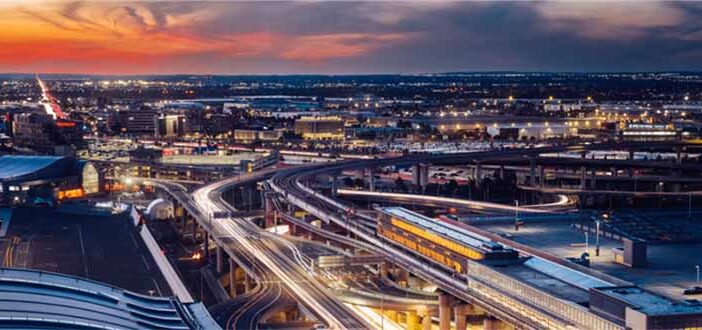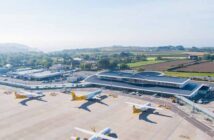Toronto Pearson International Airport, Canada’s busiest aviation hub, offers a comprehensive and efficient experience for travellers exploring Toronto or connecting to global destinations. Located in Mississauga, 25 kilometres northwest of downtown Toronto, the airport is easily accessible via multiple transport options. The Union Pearson (UP) Express train provides a swift 25-minute ride to Union Station for £9.25 with a PRESTO card or £12.35 without, departing every 15 minutes from 4:55 am to 1:00 am. Public buses, such as TTC routes 52A and 952 Lawrence West, connect to the city in 70–90 minutes for £2.50, while overnight services like 300A Bloor-Danforth operate after 1:00 am.
Taxis and ride-shares, available at Terminals 1 and 3, reach downtown in 30–40 minutes for £40–£60, and car rentals from Avis, Budget, Hertz, and others are located on Level 1 of each terminal’s car park. Passengers with mobility needs can access wheelchair services and ramps, with assistance bookable 48 hours in advance.
The airport features two main terminals, Terminal 1 and Terminal 3, connected by a 24-hour Terminal Link train that takes 2–8 minutes. Terminal 1, with 58 gates, serves Air Canada, Star Alliance airlines, and others, handling up to 30 million passengers annually. Terminal 3, with 46 gates, caters to WestJet, SkyTeam, and Oneworld carriers. The layout is navigable with moving walkways and clear signage, though walking between terminals takes 20–25 minutes, making the train a better option for those with luggage.
Security queues can extend to 45 minutes during peak times, such as summer or early mornings, and US-bound passengers face additional customs screening due to pre-clearance facilities. Travellers should arrive 2 hours before domestic flights and 3 hours before international ones, especially for non-Schengen or US destinations.
On-time performance is generally reliable but can be affected by high passenger volumes in summer, with daily traffic exceeding 160,000, or winter weather like snow. Real-time flight updates are available via Flightradar24 or the airport’s website. The airport handles 1,250 daily flights to 180 destinations across six continents, with Air Canada, WestJet, and Delta facilitating efficient connections. Minimum connection times are 40 minutes for domestic-to-domestic and 60–90 minutes for international flights, though US customs or terminal changes may require up to 2.5 hours for self-transfers.
Dining and retail options are extensive. Terminal 1 offers Lee Kitchen by Susur Lee and Freshii for healthy meals, while Terminal 3 features Paramount Fine Foods and Starbucks, with most eateries open from 5:00 am to 10:00 pm. Duty-free shops in both terminals sell perfumes and alcohol, and retail includes Victoria’s Secret and The Body Shop in Terminal 1, and Metalsmiths Sterling in Terminal 3. A £20 statement credit is available for spending £80 at participating outlets. Prices can be high, so budget travellers may prefer to bring snacks.
Facilities enhance comfort and accessibility. Free Wi-Fi is available via the “Toronto Pearson Wi-Fi” network, and charging stations are scattered throughout. Plaza Premium Lounges in both terminals offer showers and dining for £30 for economy passengers. Baby-changing rooms, a children’s play area, and an interfaith centre are present, alongside baggage wrapping and lost property services at the Travel Store. Over 2,000 parking spaces include a Cell Phone Waiting Area for 45 minutes of free parking, with long-term rates starting at £15 per day.
The airport operates 24/7, but nearby hotels like the Westin Toronto Airport, 2.8 kilometres away, suit layovers. Accessibility features include lifts, text telephones, and Aira ASL services for visually impaired passengers.




